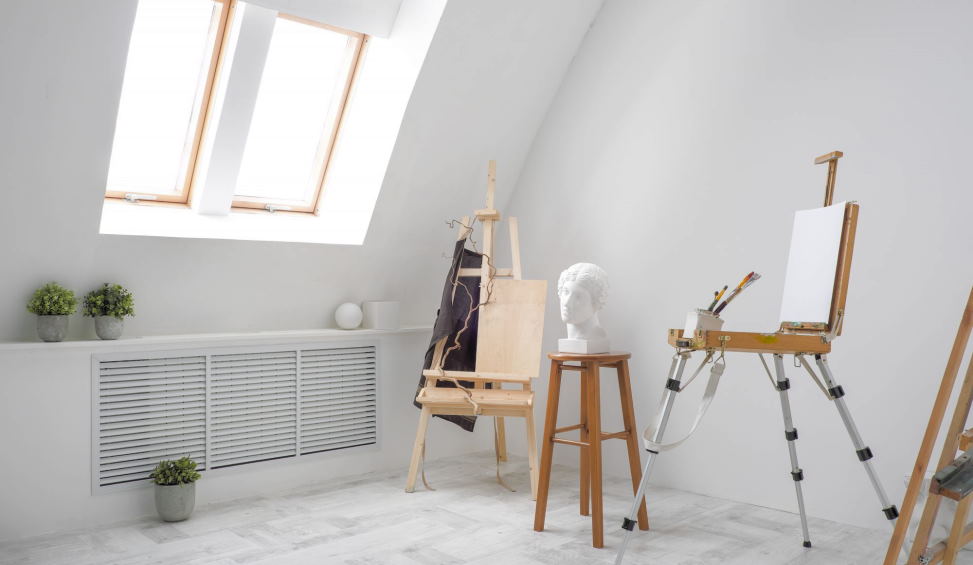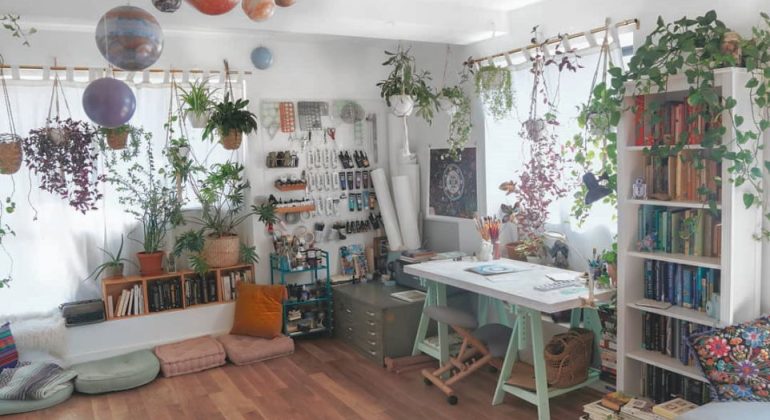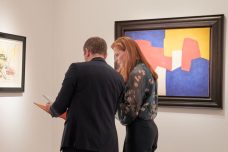Are you an artist that needs a designated space to work on your craft? Maybe you’re looking for tips on how to set up a home studio. Either way, this blog post is for you. We’ll provide information on what you’ll need to get started and some basic tips to help make the process smoother. So whether you’re just starting or have been working from home for a while, read for some helpful advice.
DIY guide to designing a home art studio
If you’re an artist, chances are you’ve thought about creating a space in your home dedicated to your art. However, maybe you don’t have the room for a full-fledged studio, or you’re just not ready to commit to a permanent space. Whatever the reason, there’s no need to let a lack of space or resources stop you from creating art in your home.
With some planning and creativity, you can easily design a home art studio that will suit your needs and budget. Here are some tips to get you started:
- Choose the right location
The first step is to choose the right location for your home art studio. If you have the space, try finding a room with plenty of natural light. If you don’t have an entire room to dedicate to your studio, get creative and repurpose another space in your home, like a corner of the living room or a spare bedroom.

- Make a plan
Once you’ve chosen the location for your studio, it’s time to start planning the design. First, consider how you want to use the space and what kind of art you’ll create. This will help you determine what kind of storage and workspace you’ll need.
If you’re tight on budget or space, consider using multi-purpose furniture and storage solutions that can do double duty, like a coffee table that doubles as a work surface or a bookshelf that can hold both art supplies and finished pieces.
- Let the light in
As we mentioned, natural light is ideal for any home art studio. However, if your chosen location doesn’t have much in the way of windows, consider using artificial lighting to brighten up the space. Desk lamps, floor lamps, and track lighting are all great options for providing task lighting. Just be sure to use energy-efficient bulbs to help keep your electric bill in check.
- Add some personal touches
Once you’ve got the basics, it’s time to add some personal touches to make the space your own. Hang some artwork on the walls, add a few plants or flowers, and include any other elements that will help you feel creative and inspired.
Creating a home art studio doesn’t have to be expensive or complicated. With a little bit of planning and creativity, you can easily design a space perfect for your needs and budget. So what are you waiting for? Get started today!

Creating the perfect home art studio
Setting up a home studio can be challenging if you’re an artist on a budget. But with a little creativity and resourcefulness, it is possible to create a functional and inspiring space. Here are some tips to help you get started:
- Find or create a dedicated space. A spare room, basement, or even a corner of your living room can work well as long as it is relatively quiet and has good lighting. If possible, try to keep the space clutter-free so that you can focus on your work.
- Invest in essential equipment. Depending on your medium, you will need basic supplies such as paints, brushes, canvases, paper, clay, etc. Once you have the essentials, you can gradually add more specialized equipment as your budget allows.
- Make use of natural light. If possible, position your workspace near a window to take advantage of natural light. This will not only save you money on lighting costs, but it can also help to create a more inspiring work environment.
- Use affordable storage solutions. Keep your supplies organized and readily accessible with simple storage solutions such as shelves, bins, and baskets. You can find many affordable options at your local home improvement or dollar store.
- Get creative with wall art. Rather than purchasing expensive artwork, try creating your own or using found objects to personalize your space. This is a great way to add some personality to your studio and make it feel like your own.
By following these tips, you can set up a home studio that meets your specific needs and budget. Then, with a little bit of effort, you can create a space that is both functional and inspiring.







